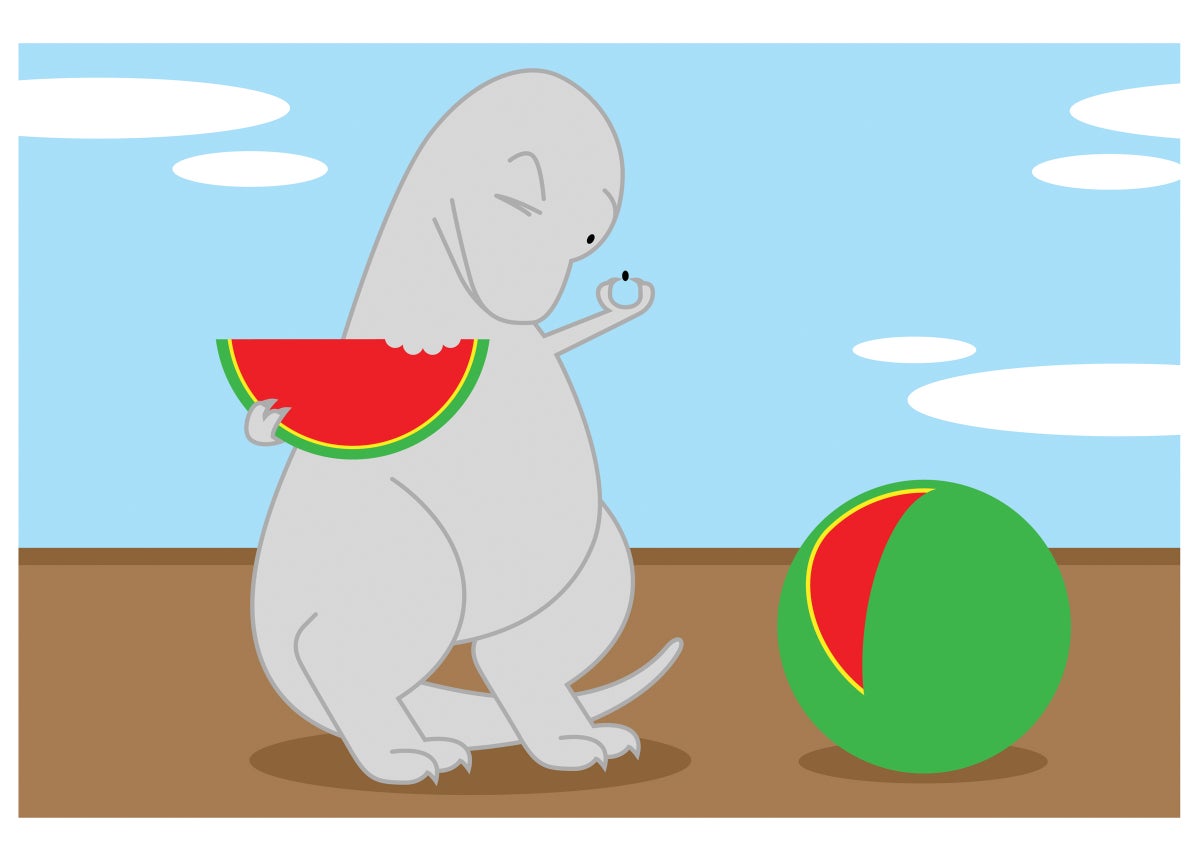For Fruit Seeds, Humans Are Modern-Day Dinosaurs
By physically engineering their environments, megafauna such as dinosaurs curbed fruit seed sizes—a role that now may be filled by humans
Join Our Community of Science Lovers!
What do humans have in common with the dinosaurs that trampled through ancient forests? It turns out that both may have a surprising impact on the size of seeds in the fruits growing around them. When researchers mapped the evolution of seed sizes onto that of land animals, they observed that when land animals got bigger, so did fruit seeds—with a few outsize exceptions. A recent study in illustrates how, over the course of natural history, gigantic megafauna such as dinosaurs curbed the growth of seed sizes by physically altering the ecosystem, influencing forest light levels. Today that role may be filled by a much tinier species: humans.
The idea that land animals can alter their environments is “fairly straightforward and well substantiated in a variety of scales,” explains Clive G. Jones, an ecologist at the Cary Institute of Ecosystem Studies in Millbrook, N.Y., who was not involved in the new study. For instance, savanna elephants push down trees and tear at shrubs, transforming the plant landscape. But even this elephantine influence is minor in comparison to that of prehistoric creatures.
The researchers’ new model suggests dinosaurs caused a level of destruction that suppressed an evolutionary tendency for seeds to grow bigger, says study lead author Christopher E. Doughty, an earth system scientist at Northern Arizona University. Bigger seeds tend to attract bigger animals for dispersal and to sprout taller plants, Doughty explains; both factors can give plants better access to sunlight in crowded conditions. But this was generally not the case when there were “big lumbering dinosaurs knocking things down, opening up the environment” and thinning forests, Doughty says.
If you’re enjoying this article, consider supporting our award-winning journalism by subscribing. By purchasing a subscription you are helping to ensure the future of impactful stories about the discoveries and ideas shaping our world today.
After dinosaurs went extinct, forest understories became about 20 percent darker. This change “reset the slate” for plants and other animals, Doughty says. And “during this time the canopy became more closed,” notes Brian Atkinson, a University of Kansas paleobotanist not involved in the study. This growth would have placed evolutionary pressure on seeds to get larger again, Atkinson says, which is also reflected in fossil data. Another dip in seed size occurred with the emergence of early giant mammals and persisted until they died out.
Jones notes that humans influence plant life in many other ways as well. “Agriculture [is] one obvious example,” he says, along with “introducing exotic species, clearing forests to make suburbia, to make cities, and so on.”
Gayoung Lee is Scientific American’s current news intern. A philosopher turned journalist, originally from South Korea, Lee’s interests lie in finding unexpected connections between life and science, particularly in theoretical physics and mathematics. You can read more about her here: https://gayoung-lee.carrd.co
Source: www.scientificamerican.com
